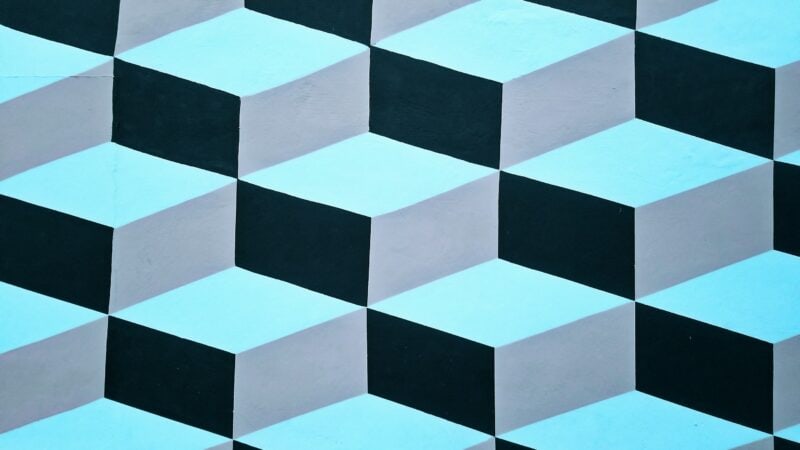Delicious Gluten-Free Recipes for People with Celiac Disease

Celiac disease is a chronic autoimmune disorder that affects the small intestine and is triggered by the consumption of gluten. Gluten is a protein found in wheat, barley, and rye, and it can cause damage to the lining of the small intestine in individuals with celiac disease. This damage can lead to a variety of symptoms, including abdominal pain, bloating, diarrhea, and fatigue.
Understanding celiac disease is crucial for those who suffer from it, as well as for those who cook for them. It is estimated that 1 in 100 people worldwide have celiac disease, and many of them may not even be aware of it. By understanding the disease and its impact on diet, individuals with celiac disease can make informed choices about what they eat and avoid potential triggers. Additionally, those who cook for individuals with celiac disease can ensure that they are providing safe and delicious meals that meet their dietary needs.
Table of Contents
Key Takeaways
- Celiac disease is an autoimmune disorder that affects the small intestine’s ability to absorb nutrients from food containing gluten.
- Gluten-free cooking and baking are essential for those with celiac disease to avoid symptoms such as abdominal pain, bloating, and diarrhea.
- Nutritious breakfast ideas for celiac sufferers include gluten-free oatmeal, smoothie bowls, and egg dishes.
- Satisfying lunch and dinner recipes without gluten include salads, soups, stir-fries, and grilled meats or fish.
- Gluten-free snacks such as fruits, nuts, and rice cakes can keep you fueled throughout the day without triggering celiac symptoms.
Understanding Celiac Disease: What it is and How it Affects Your Diet
Celiac disease is an autoimmune disorder in which the body’s immune system mistakenly attacks the lining of the small intestine when gluten is consumed. This attack causes inflammation and damage to the villi, which are small finger-like projections that line the small intestine and help with nutrient absorption. Over time, this damage can lead to malabsorption of nutrients and a variety of symptoms.
Gluten is a protein found in wheat, barley, and rye. When individuals with celiac disease consume gluten, their immune system reacts by producing antibodies that attack the lining of the small intestine. This immune response can cause a range of symptoms, including abdominal pain, bloating, diarrhea, constipation, fatigue, and weight loss.
Diagnosing celiac disease can be challenging because its symptoms can vary widely from person to person. However, there are several tests that can help determine if someone has celiac disease, including blood tests to check for specific antibodies and a biopsy of the small intestine to look for damage to the villi.
The Importance of Gluten-Free Cooking and Baking
For individuals with celiac disease, following a strict gluten-free diet is essential to managing their condition and preventing further damage to the small intestine. This means avoiding all sources of gluten, including wheat, barley, and rye, as well as any products that may contain hidden sources of gluten.
Gluten-free cooking and baking is necessary to ensure that individuals with celiac disease can enjoy a wide variety of delicious and nutritious meals without risking exposure to gluten. Fortunately, there are now many gluten-free flours and ingredients available that can be used as substitutes for traditional wheat flour.
Gluten-free flours, such as rice flour, almond flour, and tapioca flour, can be used in place of wheat flour in recipes. Additionally, there are many gluten-free products on the market, such as pasta, bread, and baking mixes, that make it easier than ever to create gluten-free meals and treats.
Adapting recipes to be gluten-free can be a fun and creative process. Experimenting with different flours and ingredients can lead to delicious results. It’s important to note that gluten-free baking may require some adjustments to traditional recipes, as gluten provides structure and elasticity to baked goods. Adding xanthan gum or guar gum can help mimic the texture of gluten in gluten-free baked goods.
Delicious and Nutritious Breakfast Ideas for Celiac Sufferers
Breakfast is often referred to as the most important meal of the day, and it’s no different for individuals with celiac disease. There are plenty of delicious and nutritious breakfast options that are naturally gluten-free.
One popular option is gluten-free pancakes or waffles. These can be made using a variety of gluten-free flours, such as rice flour or almond flour, and can be topped with fresh fruit, maple syrup, or nut butter for added flavor and nutrition.
Another great option is gluten-free muffins. These can be made using gluten-free flour blends and can be packed with nutritious ingredients like fruits, vegetables, and nuts. They can be enjoyed on their own or paired with a side of yogurt or a smoothie for a complete and satisfying breakfast.
It’s also important to incorporate protein and fiber into breakfast to help keep you full and energized throughout the morning. Adding eggs, Greek yogurt, or a protein powder to your breakfast can help increase the protein content. Additionally, incorporating fruits, vegetables, and whole grains into your breakfast can help boost the fiber content.
Satisfying Lunch and Dinner Recipes Without Gluten
Lunch and dinner are often the main meals of the day, and there are plenty of satisfying gluten-free options to choose from.
One popular option is gluten-free pasta dishes. There are now many gluten-free pasta options available, made from ingredients like rice, corn, or quinoa. These can be used in place of traditional wheat pasta in recipes like spaghetti carbonara or macaroni and cheese.
Stir-fries are another great option for gluten-free meals. By using gluten-free soy sauce or tamari and serving over rice or rice noodles, you can create a delicious and satisfying meal that is free from gluten.
Salads are also a great option for gluten-free meals. By using fresh vegetables, lean proteins like grilled chicken or tofu, and a gluten-free dressing, you can create a nutritious and filling salad that is free from gluten.
When cooking gluten-free meals, it’s important to incorporate flavor and variety to keep things interesting. Experimenting with different herbs, spices, and sauces can help add depth of flavor to your dishes. Additionally, incorporating a variety of vegetables, proteins, and grains into your meals can help ensure that you are getting a well-rounded and nutritious meal.
Gluten-Free Snacks to Keep You Fueled Throughout the Day

Snacks are an important part of any diet, and there are plenty of gluten-free options to choose from.
One popular option is homemade gluten-free granola bars. These can be made using gluten-free oats, nuts, seeds, and dried fruit. They can be customized to your taste preferences and are a great option for a quick and convenient snack.
Trail mix is another great option for a gluten-free snack. By combining nuts, seeds, dried fruit, and gluten-free pretzels or cereal, you can create a delicious and portable snack that is free from gluten.
Hummus is also a great option for a gluten-free snack. By serving with gluten-free crackers or fresh vegetables, you can create a satisfying and nutritious snack that is free from gluten.
Incorporating fruits and vegetables into your snacks is also important for a well-rounded and nutritious diet. Fresh fruits can be enjoyed on their own or paired with nut butter or yogurt for added flavor and nutrition. Fresh vegetables can be enjoyed with hummus or guacamole for a satisfying and nutritious snack.
Sweet Treats and Desserts for Those with a Sweet Tooth
Just because you have celiac disease doesn’t mean you have to give up sweet treats and desserts. There are plenty of delicious gluten-free options to choose from.
One popular option is gluten-free cookies. These can be made using gluten-free flour blends and can be customized with your favorite mix-ins, such as chocolate chips, nuts, or dried fruit.
Gluten-free cakes are another great option for those with a sweet tooth. By using gluten-free flour blends and adding moisture-rich ingredients like yogurt or applesauce, you can create a delicious and moist cake that is free from gluten.
Brownies are also a great option for a gluten-free dessert. By using gluten-free flour blends and adding ingredients like cocoa powder or melted chocolate, you can create a rich and fudgy brownie that is free from gluten.
When adapting traditional dessert recipes to be gluten-free, it’s important to use a gluten-free flour blend that is specifically designed for baking. These blends often contain a mixture of gluten-free flours, such as rice flour, tapioca flour, and potato starch, as well as xanthan gum or guar gum to help mimic the texture of gluten.
Gluten-Free Comfort Foods for Cozy Nights In
Comfort foods are often associated with gluten-containing ingredients like pasta, bread, and baked goods. However, there are plenty of gluten-free comfort food options to choose from.
One popular option is gluten-free mac and cheese. By using gluten-free pasta and a creamy cheese sauce made with gluten-free flour and milk, you can create a delicious and satisfying mac and cheese that is free from gluten.
Shepherd’s pie is another great option for a gluten-free comfort food. By using ground turkey or beef, vegetables, and a mashed potato topping made with dairy-free milk and butter, you can create a hearty and comforting meal that is free from gluten.
Chili is also a great option for a gluten-free comfort food. By using lean ground beef or turkey, beans, vegetables, and spices, you can create a flavorful and satisfying chili that is free from gluten.
When cooking gluten-free comfort food dishes, it’s important to incorporate vegetables and protein to ensure that you are getting a well-rounded meal. Adding vegetables like carrots, peas, or spinach to your dishes can help boost the nutritional content. Additionally, using lean proteins like chicken or turkey can help keep your meals balanced and satisfying.
Easy One-Pot Meals for Busy Weeknights
One-pot meals are perfect for busy weeknights when you don’t have a lot of time or energy to spend in the kitchen. There are plenty of gluten-free one-pot meal options to choose from.
One popular option is gluten-free soups. By using gluten-free broth, vegetables, and proteins like chicken or beans, you can create a delicious and nutritious soup that is free from gluten.
Stews are another great option for a gluten-free one-pot meal. By using gluten-free broth, vegetables, and proteins like beef or lamb, you can create a hearty and satisfying stew that is free from gluten.
Casseroles are also a great option for a gluten-free one-pot meal. By using gluten-free pasta or rice, vegetables, proteins like chicken or tofu, and a creamy sauce made with gluten-free flour and milk, you can create a delicious and comforting casserole that is free from gluten.
When making one-pot meals, it’s important to meal prep and save time in the kitchen. Prepping ingredients ahead of time, such as chopping vegetables or cooking proteins, can help streamline the cooking process. Additionally, using a slow cooker or Instant Pot can help save time and make cooking one-pot meals even easier.
Gluten-Free Entertaining: Recipes for Hosting Guests with Celiac Disease
Hosting guests with celiac disease can be intimidating if you’re not familiar with gluten-free cooking. However, there are plenty of delicious and safe options to choose from.
For appetizers, you can serve gluten-free options like fresh vegetables with hummus or guacamole, gluten-free crackers with cheese or dip, or gluten-free bruschetta made with gluten-free bread.
For main dishes, you can serve gluten-free options like grilled chicken or fish with roasted vegetables, gluten-free pasta dishes like spaghetti carbonara or pesto pasta with shrimp, or gluten-free stir-fries with rice or rice noodles.
For desserts, you can serve gluten-free options like fresh fruit with whipped cream or yogurt, gluten-free cookies or brownies, or gluten-free cakes or pies made with gluten-free flour blends.
When hosting guests with celiac disease, it’s important to communicate with them about their dietary restrictions and any specific needs they may have. This can help ensure that you are providing safe and delicious meals that meet their dietary needs. Additionally, it’s important to read labels and check for hidden sources of gluten in ingredients or products that you may be using.
Tips and Tricks for Successfully Navigating a Gluten-Free Lifestyle
Living a gluten-free lifestyle can be challenging at times, but with the right tips and tricks, it can also be enjoyable and fulfilling.
One tip for successfully navigating a gluten-free lifestyle is to read labels and familiarize yourself with hidden sources of gluten. Gluten can be found in a variety of products, including sauces, condiments, and processed foods. By reading labels and checking for hidden sources of gluten, you can ensure that you are making safe choices.
Another tip is to find gluten-free products and restaurants that you enjoy. There are now many gluten-free products on the market, as well as restaurants that cater to individuals with dietary restrictions. By finding products and restaurants that you enjoy, you can make the transition to a gluten-free lifestyle easier and more enjoyable.
Staying motivated and positive while adapting to a gluten-free diet is also important. It can be challenging at times, but focusing on the benefits of a gluten-free lifestyle, such as improved digestion and increased energy levels, can help keep you motivated. Additionally, finding support from others who are also living a gluten-free lifestyle can provide encouragement and inspiration.
In conclusion, understanding celiac disease is crucial for those who suffer from it and those who cook for them. By understanding the disease and its impact on diet, individuals with celiac disease can make informed choices about what they eat and avoid potential triggers. Additionally, those who cook for individuals with celiac disease can ensure that they are providing safe and delicious meals that meet their dietary needs.
There are plenty of delicious and nutritious gluten-free options to choose from for every meal of the day. From breakfast to dessert, there are endless possibilities for creating gluten-free meals and treats that are both satisfying and safe.
Embracing a gluten-free lifestyle can be challenging at times, but with the right tips and tricks, it can also be enjoyable and fulfilling. By reading labels, finding gluten-free products and restaurants that you enjoy, and staying motivated and positive, you can successfully navigate a gluten-free lifestyle.
So whether you have celiac disease or cook for someone who does, don’t be discouraged. Embrace the challenge of a gluten-free lifestyle and enjoy the delicious and nutritious meals that await you.
If you’re looking for more information on maintaining a healthy lifestyle, you might be interested in this article on the serious side effects of turmeric. Turmeric has gained popularity for its numerous health benefits, but it’s important to be aware of any potential risks or side effects. This article explores ten serious side effects that can occur when consuming turmeric. To learn more, check out the article here.
FAQs
What is celiac disease?
Celiac disease is an autoimmune disorder in which the ingestion of gluten leads to damage in the small intestine.
What is gluten?
Gluten is a protein found in wheat, barley, and rye.
What are the symptoms of celiac disease?
Symptoms of celiac disease include abdominal pain, bloating, diarrhea, constipation, fatigue, and weight loss.
How is celiac disease diagnosed?
Celiac disease is diagnosed through blood tests and a biopsy of the small intestine.
What foods should people with celiac disease avoid?
People with celiac disease should avoid foods that contain wheat, barley, and rye. This includes bread, pasta, cereal, and many processed foods.
What are some gluten-free alternatives?
Gluten-free alternatives include rice, quinoa, corn, and gluten-free flours such as almond flour and coconut flour.
What are some delicious gluten-free recipes?
Delicious gluten-free recipes include gluten-free pizza, gluten-free pasta dishes, and gluten-free baked goods such as cookies and cakes.






